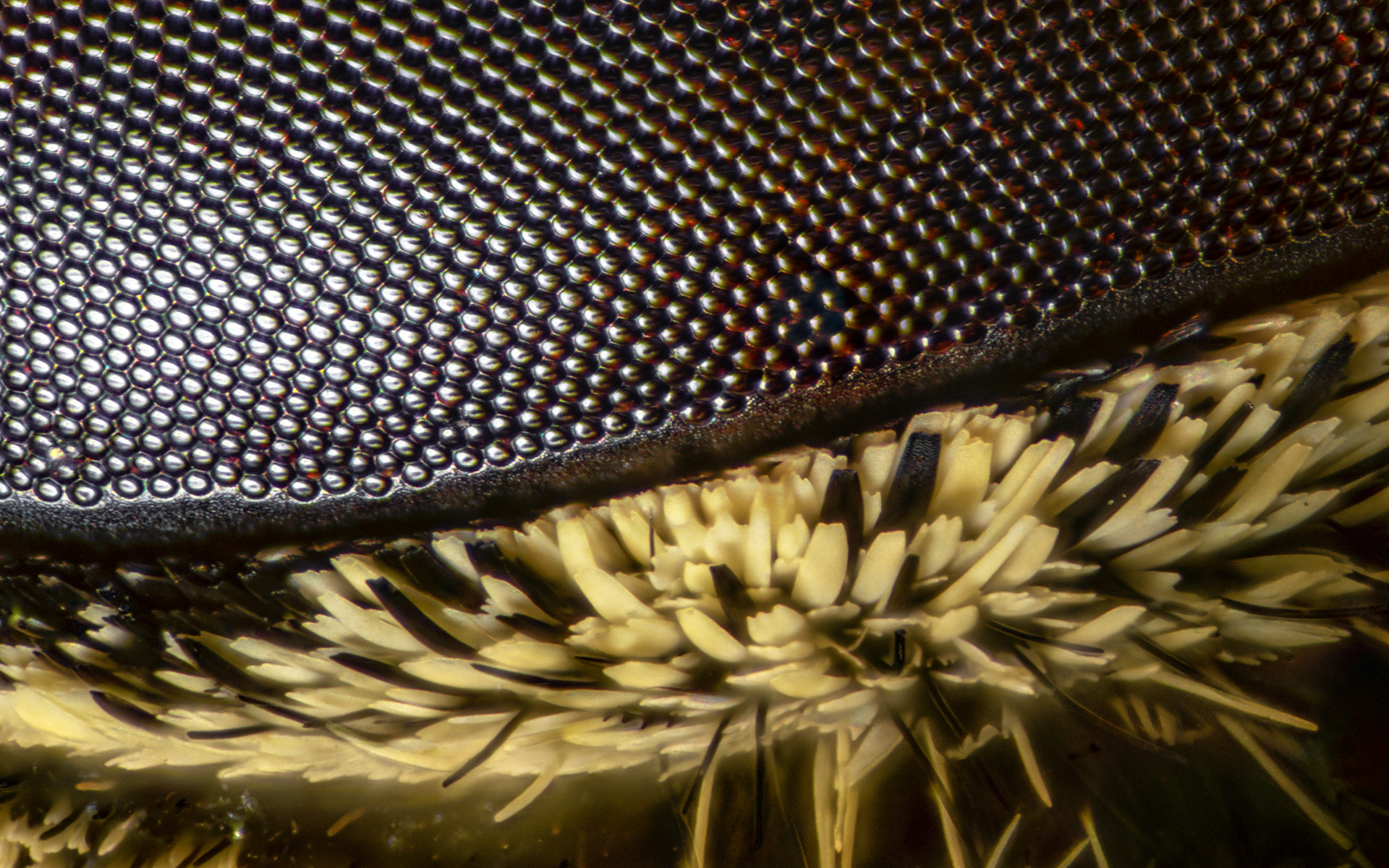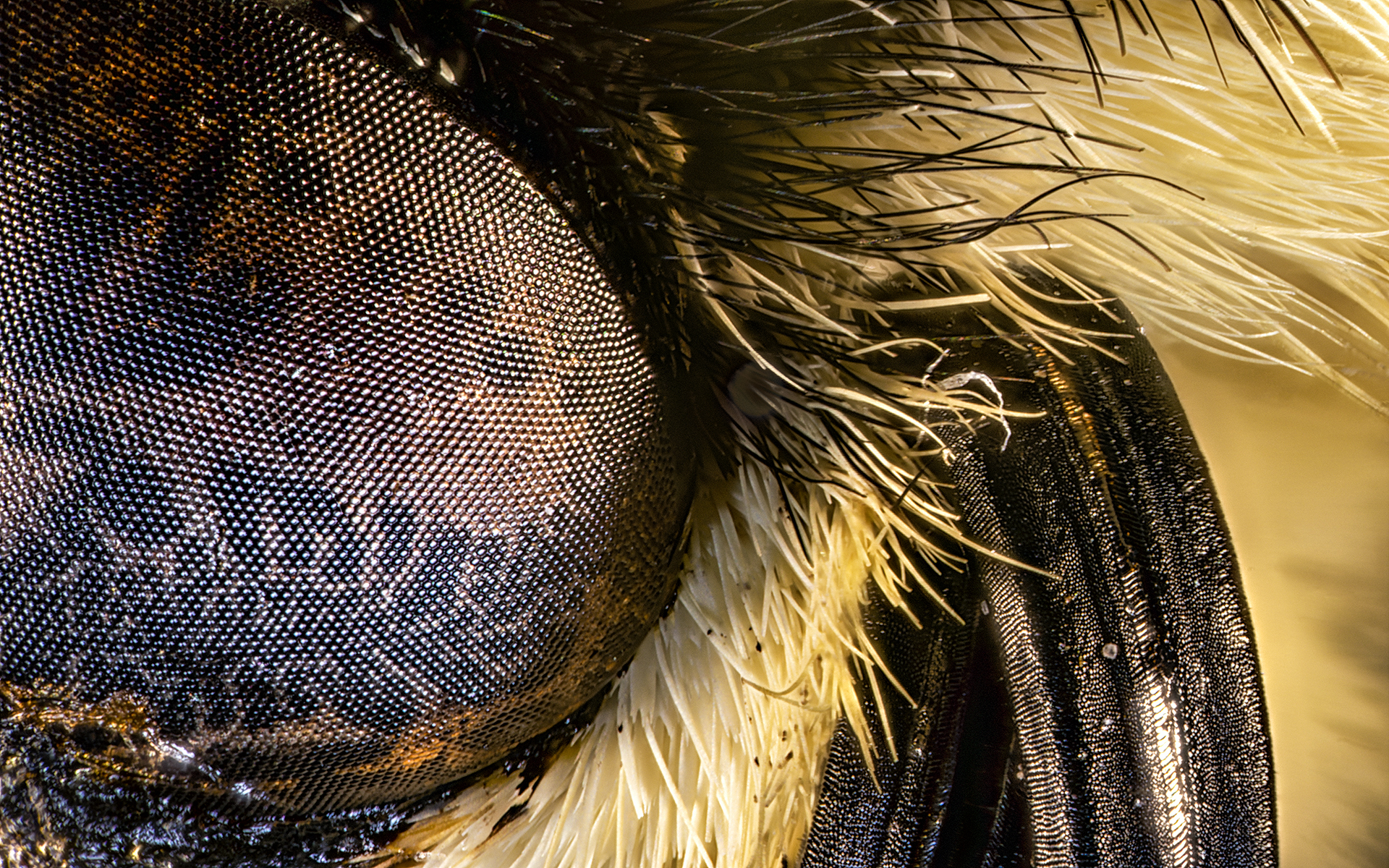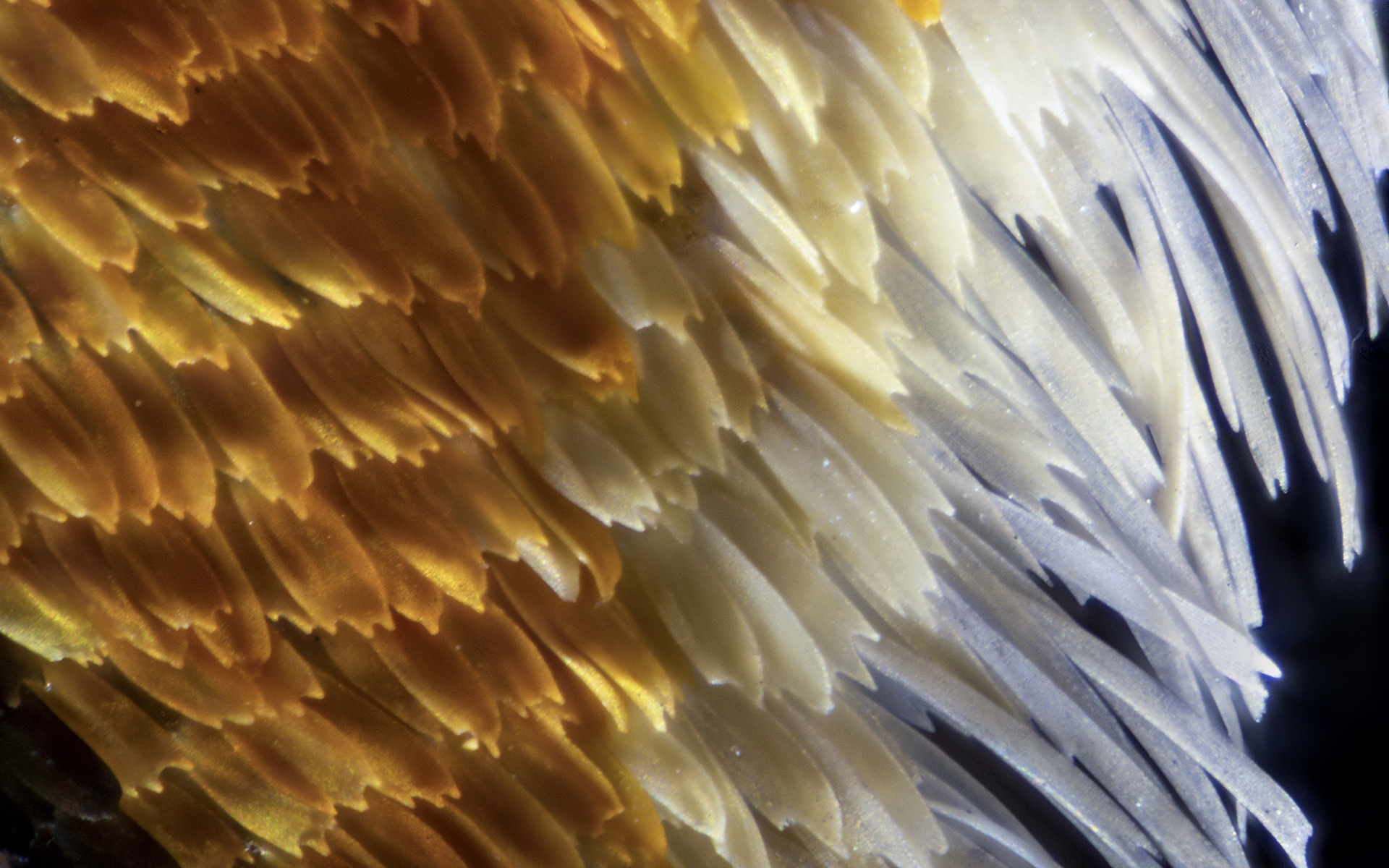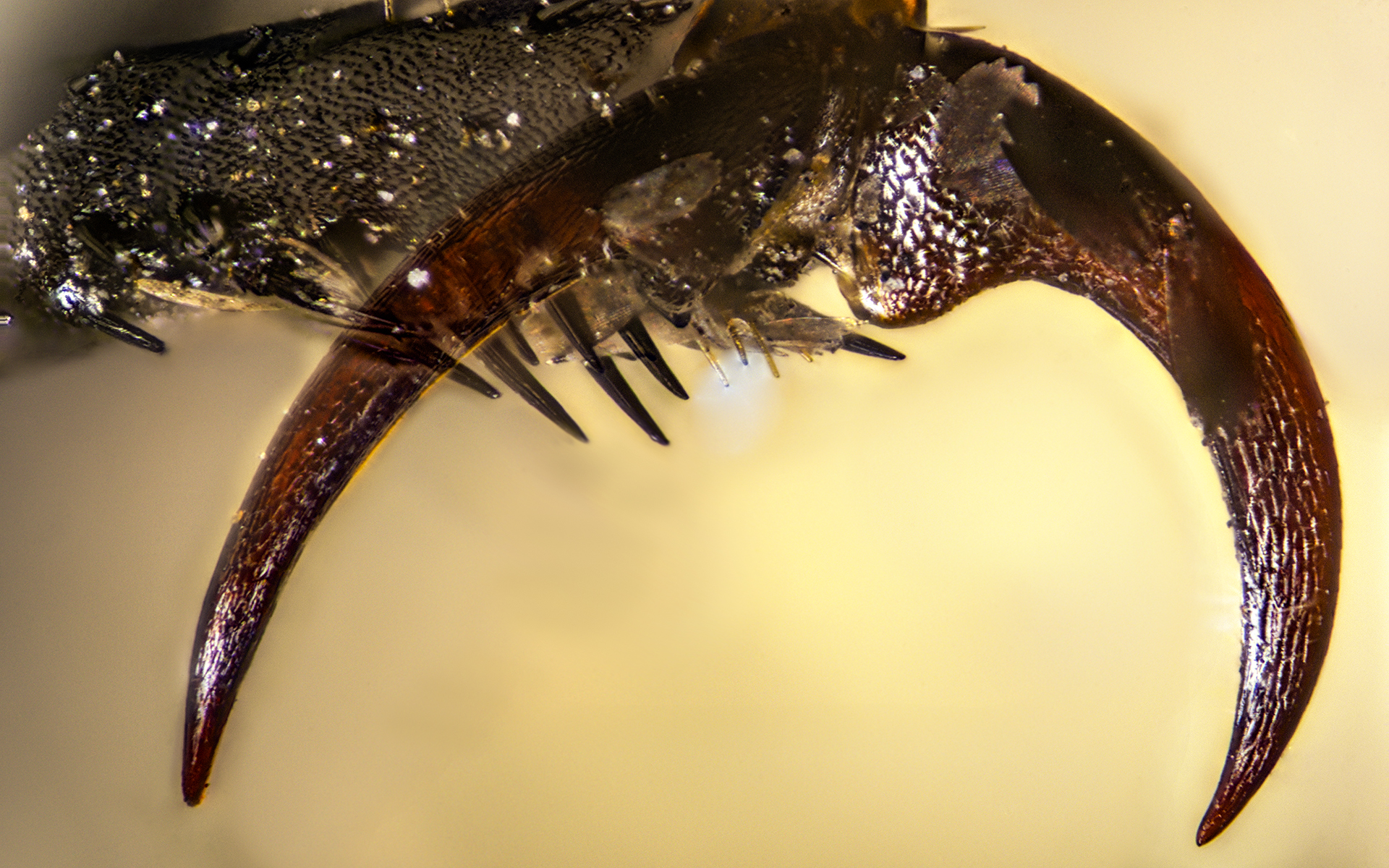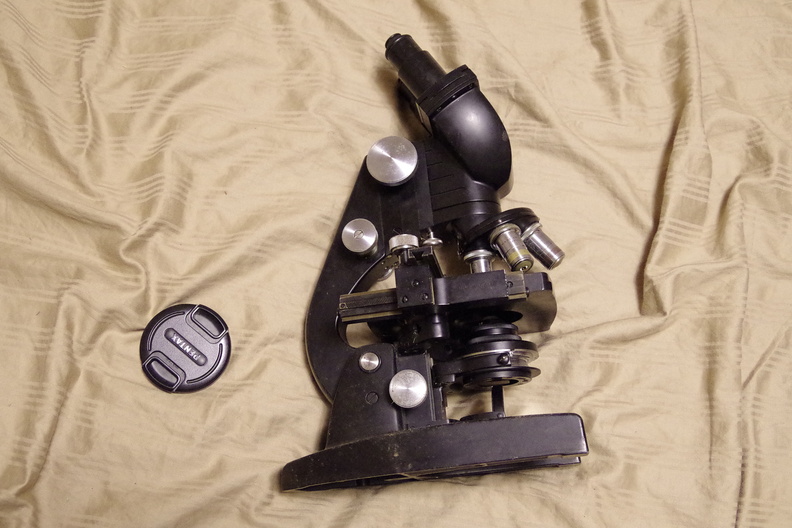 Originally posted by MikeNArk
Originally posted by MikeNArk 
Thanks so much for sharing this microscopic look at the Tiger Swallow tail butterfly. Your captures are extraordinary. They show us the complexity and beauty Of this life form.
Thanks for such nice feedback! It baffles me that their tiny brains can so gracefully control all of their complexity.
 Originally posted by blues_hawk
Originally posted by blues_hawk 
These are amazing and well lit too. How did you position the lens on the microscope? Any chance we could get a pic of the setup? I have an old military binoc microscope and wouldn't mind trying this.
Thanks, and I have some fairly poor photos of my setup but I think I'll shoot some new ones tonight, and I'll add one here tomorrow. I'm doing eyepiece projection photomicroscopy, which is a fancy way of saying I'm adapting my camera with a lens attached directly onto the eyepiece of the microscope. This way the magnification is fairly consistent with what we see with our eyes when looking through the eyepiece, but it depends on the focal length of the "host lens". I use the 50mm f./1.7 because it's what I have and it increases the magnification slightly on the APS-C sensor.
For lighting I'm experimenting with strobes. It seems to have been a decent idea, at least for some subjects, but I'm still in the process of experimenting with making diffusers and trying different things. Prior to that, and still as a supplement for composing the shot I've been using a pair of ordinary LED floodlights in desk lamps, as close to the stage as I can get them. I do my composing in Live View, and then I turn it off and shoot the stack while watching the opposite side of the focusing wheel to measure my increments more precisely. I've had a much easier time training the muscle memory for it while watching my hand do it, so I'd suggest trying that if you get into manual stacking. I monitor progress and decide when to stop by watching the 1 second reviews of the exposures. This stuff is a lot of fun, and I absolutely recommend it. Over the past two years I've put thousands of happy hours into it, but you don't have to do that to get results. It's just very addictive to me.
One concern with binocular microscopes is that you need to be sure it can support the weight of your camera at an angle, and it does put some strain on your camera mount, and potentially the filter thread, but I don't think it should be a problem unless you're using something quite heavy. You'll just want to be gentle with it while it's mounted. There's an example of an adapter similar to the one I use on Ebay
here that is probably all you need to mount a camera and lens, attaching the adapter to the filter thread of whichever lens you decide to use. If you can find one that has rubber tipped screws, even better, because it might scuff your eyepiece otherwise. You could also improvise. A bit of electrical tape on the eyepiece first should protect the finish from the screws. You might also want to look for one with longer screws so you could use it with a 23mm eyepiece in future. I use some PVC tape to prevent light leaks, and I keep the adapter and the prime lens mounted on that microscope all of the time. This way I can just swap the body off. It's very convenient.
 Originally posted by SelrahCharleS
Originally posted by SelrahCharleS 
Nice! A continuation of this great series

Thanks! I was a little concerned I was posting too many lately, prior to posting.


 Similar Threads
Similar Threads 
